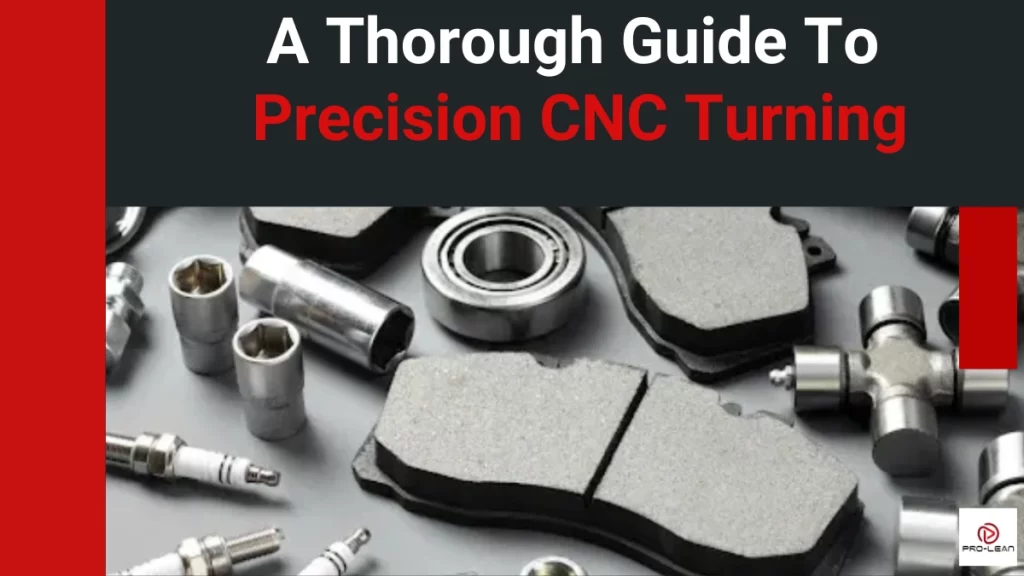
Precision CNC turning
Have you ever wondered how door lock cylinders, watch gears, or fuel injector nozzles are manufactured? Chances are that these intricate components are made through high-precision CNC turning.
Precision CNC turning combines the power of Computer Numerical Control (CNC) with modern precision technology. A computer program controls how cutting tools and 3d precision machine movements interact with a cylindrical workpiece to produce parts of incredibly high precision and finish quality.
Precision CNC turning is versatile, so apart from serving ordinary applications, it is also used in medicine, aerospace, and other high-precision areas. This guide outlines the basics of this specialized CNC machining technology, focusing on definitions, operations, materials, and applications.
What Is CNC Machining?
Before diving into the intricacies of precision CNC turning, it is important to define CNC machining, which is a manufacturing approach revolving around the automation of the machining process to produce accurate parts.
A typical CNC machining process entails planning, CAD design, CAM programming for toolpaths and cutting parameters, executing the CNC program to machine a part, and post-machining activities.
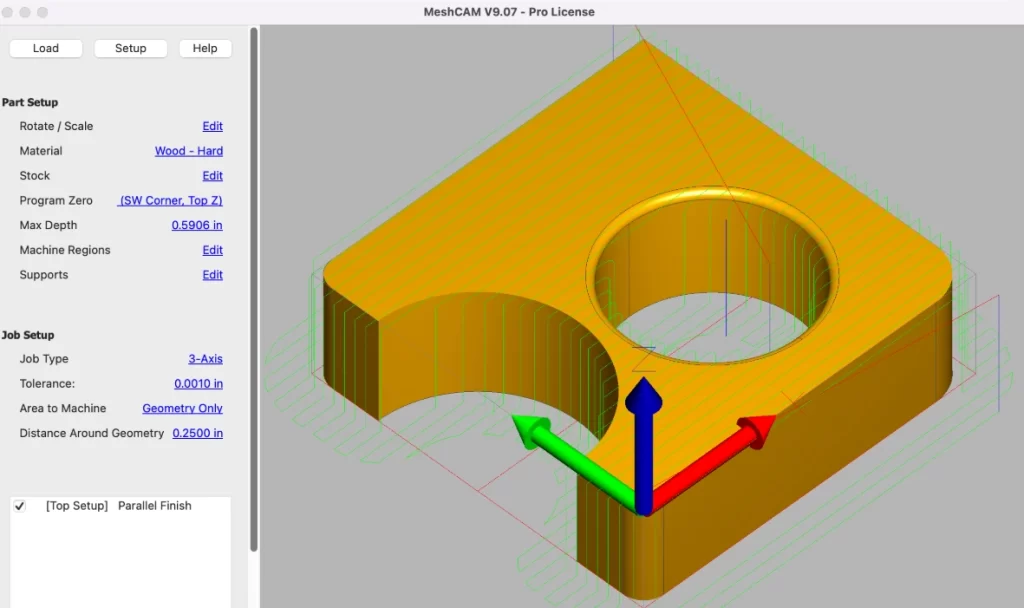
CNC CAM software
CNC machining is available as;
- CNC precision turning
- Precision CNC milling
- CNC precision drilling
- CNC precision grinding
- CNC precision laser cutting
- CNC precision waterjet cutting
- CNC Electrical Discharge Machining (EDM)
- CNC precision plasma cutting
- CNC precision punching
- CNC precision boring
CNC machining is a popular manufacturing method in a wide range of industries, from automotive to military, and transportation to medical. It is highly regarded because it gives organizations that use CNC-machined parts benefits such as higher accuracy with no defects, faster production, faster product assembly, and reduced manufacturing costs.
Read more:
Explore the Precision Laser Cutting Advantages & Disadvantages
What Is Precision Machining?
While CNC machining is relatively general, precision machining brings exactness and tightness to dimensions and tolerances. It is an effective manufacturing strategy upon which modern organizations, from medical to electronics, base their parts requirements.
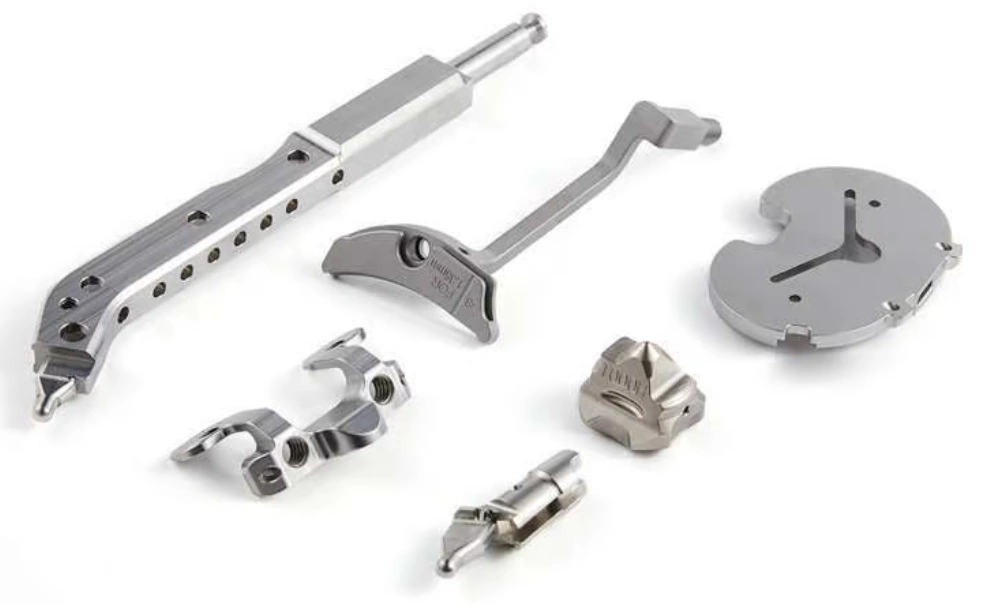
Precision CNC-machined medical parts
The core elements of precision machining are high-quality, precise tools & manufacturing, and Computer Numerical Control (CNC) machines. The two combine to ensure the parts fit and produce highly effective components. Notable methods and equipment for precision machining are CNC lathes, CNC milling machines, multi-axis CNC machining, and Swiss machining.
What Is The Difference Between CNC Machining And Precision Machining?
There is a fundamental difference between CNC machining and precision machining, in that while CNC machining focuses solely on computer control for automated machining, precision machining goes a step further, laying more emphasis on accuracy and attention to detail.
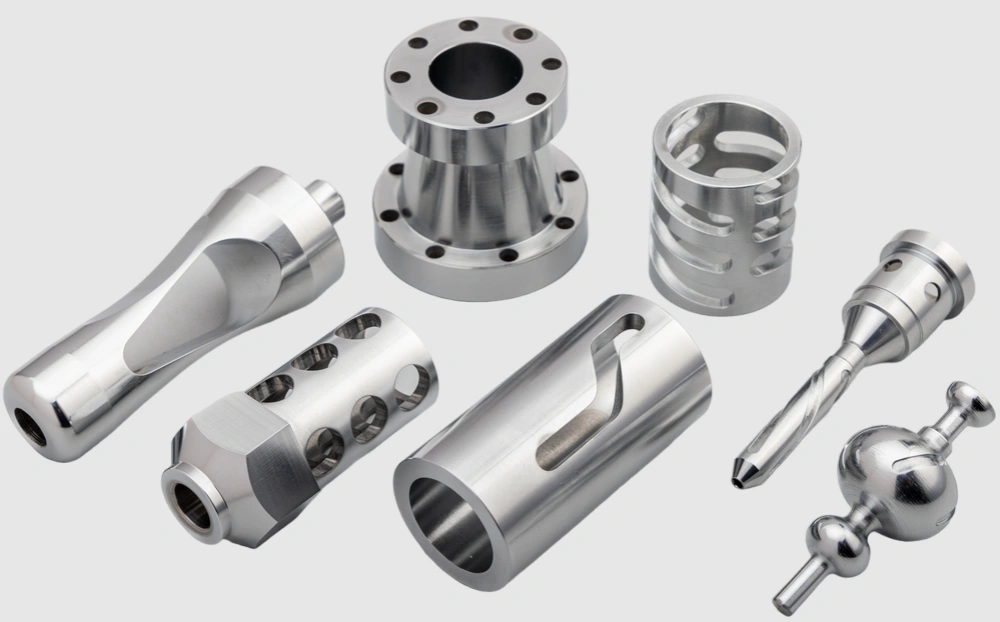
Accurate CNC-turned parts
Yet, this is not to say one is better or more important than the other. Indeed, precision machining is an enhancement of conventional CNC machining, making parts manufacturing more effective. Dealers, resellers, and users may want to pursue high precision CNC turning and other forms of machining for the following reasons;
- Flawless assembly of parts
- Enhanced aesthetics of parts
- Higher value products
As intimated earlier, precision machining services are highly sought in automotive, industrial prototyping, medical technology, aerospace parts, and defense parts, among others.
You can read more about the benefits and applications in this guide:
CNC Precision Machining Explained: Benefits & Practical Uses
What Is Precision CNC Turning?
Our focus is precision CNC turning, which is a specialized technique involving a single-point cutting tool shaping a rotating workpiece to the highest accuracy level.

Precision CNC turning
In precision CNC turning, a chuck rotates the workpiece at a high speed. The process is performed on a modern CNC lathe. There are also other forms of precision machining, which are discussed next.
What Are The Types Of CNC Precision Machines?
From an action perspective, the most common CNC precision machines are;
- CNC Lathes / Turning Centers
- CNC Milling Machines
- CNC Drilling Machines – for peck drilling, spot drilling, and others
- CNC Grinding Machines
- CNC Routers
- CNC Laser Cutting Machines
- CNC Plasma Cutting Machines
- CNC Waterjet Cutting Machines
- CNC Electrical Discharge Machines (EDM)
Each of these machines is designed to contribute to the precision machining parts process uniquely. It is noteworthy that CNC Lathes / Turning Centers and CNC Milling Machines are central to most precision CNC machining processes.
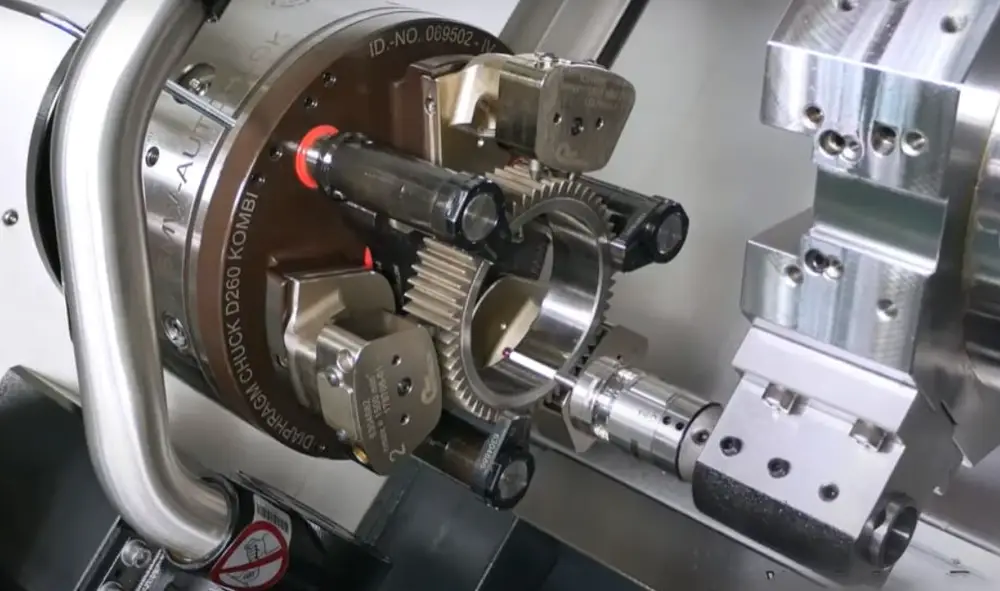
CNC turning center
Major Operations In Precision CNC Turning
After the above definition, we come to the operations in CNC turning, which include turning, knurling, drilling, parting off, grooving, and facing. These operations are simply an explanation of different ways of manipulating raw stock on the lathe to produce high-quality, accurate, usable cylindrical parts.
Turning
Turning is the most basic operation in precision CNC turning. It entails a single-point cutting tool removing material from a rotating workpiece to form a cylindrical part. This operation produces bushings, shafts, and other crucial components for mechanical systems such as transmissions and engines.
Knurling
Knurling is the production of textured patterns on a cylindrical part for functional and aesthetic purposes. The operation is common for handles and hand tools.
Drilling
Drilling can also be done through precision CNC turning, whereby the tool turret or tailstock holds a drill against a rotating workpiece. The z-axis movement of the drill towards the high-speed workpiece generates the cutting action.
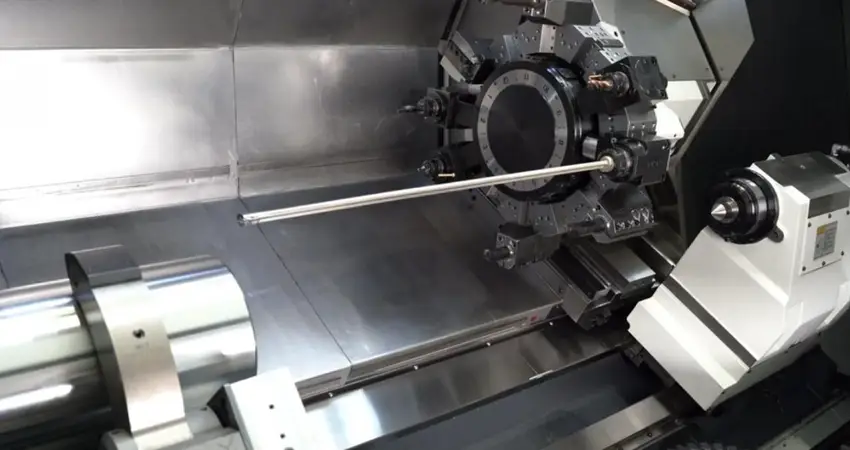
Drilling
Parting
Parting is a precision CNC turning operation in which a finished part is separated from the main raw stock. The precise action of the CNC turning machine ensures this separation occurs without damage to the finished part.
Grooving
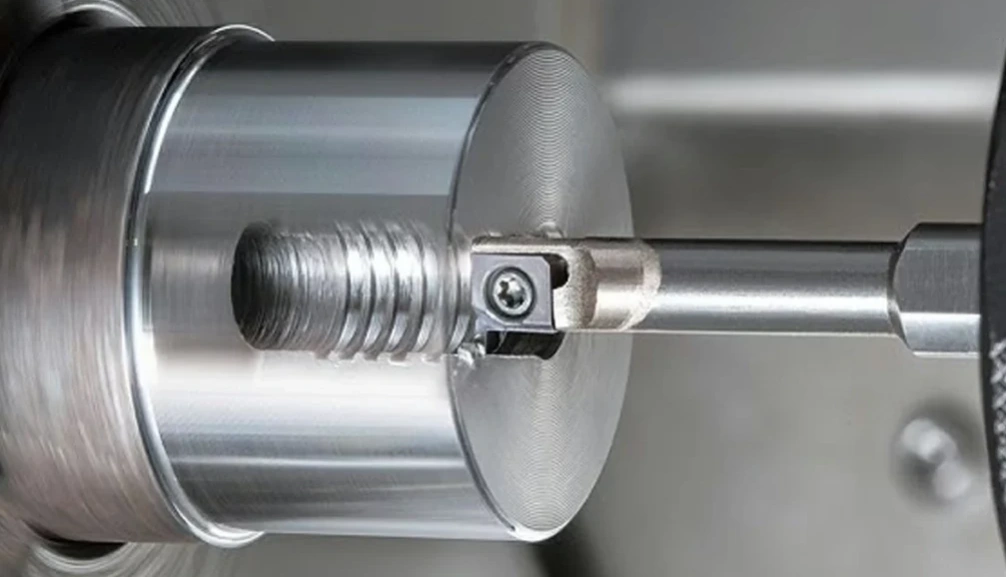
Grooving
Grooving is a precision CNC turning operation that generates narrow channels into the cylindrical workpiece. The resulting grooves, which are either external or internal, are essential for holding retaining rings. These components are useful in hydraulic systems. Grooves in the form of slots and keyways are also relevant in mechanical couplings.
Facing
Facing is when the cutting tool is run across the end of a workpiece to produce a flat surface that can be used as a reference for subsequent operations. The surface is perpendicular to the axis.
Try Prolean Now!
Common Materials For Precision CNC Turning
A precision CNC lathe is so versatile that it can be used to process a broad range of materials: Metals, engineering plastics, and composites. The best team in precision machining parts knows how to choose the best material and pair it with the relevant machine operations and settings.
Metals for Precision CNC Turning
Metals such as aluminum 6061, aluminum 7075, stainless steel 304, stainless steel 316, alloy steel, brass, and titanium are popular in precision CNC metal machining for various properties.
Depending on the metal used, notable properties are;
- Corrosion resistance
- Low weight
- High strength
- Durable
- Cost-effective
Engineering Plastics for Precision CNC Turning
Engineering plastics or thermoplastic polymers have high-performance capabilities that appeal to a wide range of industrial applications. Examples of these polymers are;
- Polyethylene Terephthalate (PET)
- Nylon 6
- Acrylonitrile Butadiene Styrene (ABS)
- Poly(methyl methacrylate) (PMMA)
- Polyether Ether Ketone (PEEK)
- Polycarbonates (PC)
- Polytetrafluroethylene (PTFE / Teflon®)
The engineering plastics are popular in CNC precision manufacturing for their abrasion resistance, chemical resistance, impact strength, ultraviolet (UV) light resistance, and dimensional stability, among other good properties.
Composites for Precision CNC Turning
To add to engineering plastics and metals, precision CNC components can also be manufactured from composites.
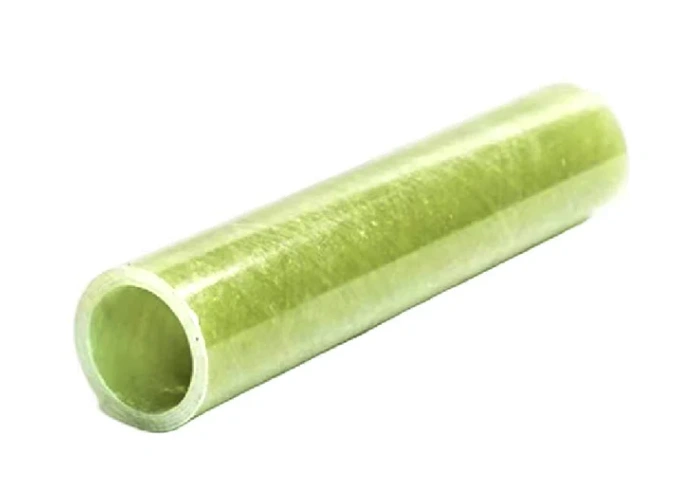
CNC turned fiberglass bushing
Consult the FAQ section for more on material options.
What is CNC Precision Machining Used For?
CNC precision-machined parts are crucial in industries that emphasize top quality, durability, and reliability. This means prominent industries like aerospace, medical, and automotive. The specific applications in such industries reiterate the importance of CNC machining accuracy and professional selection of materials.
The following table captures some popular applications of precision CNC components:
| Industry | Application Examples |
| Aerospace | Turbine shafts, engine shafts, fasteners, bearing housings, sleeves, pins |
| Automotive | Bushings, transmission shafts, brake pistons, steering column shafts |
| Electronics | Microwave housings, micromotor shafts, audio jack, threaded parts for circuit assemblies |
| Medical | Surgical fasteners, orthopedic pins, bone screws, valve parts for pumps |
| Defense & Military | Missile guidance shafts, ammunition casings, gun barrels, and fittings for vehicles |
Advantages Of Precision CNC Turning
Following the analysis of precision CNC turning so far, the evident advantages of the method include unmatched precision, minimal waste, enhanced production, and overall cost-effectiveness. Advantages such as these make sense for both large-scale manufacturing and prototyping.
Here’s more about these advantages.
Unmatched Accuracy and Precision
Accuracy and precision are the mainstay of precision CNC turning, especially compared to the regular CNC turning approach. This method can deliver the exact consistent part quality over small batch production and other volumes.
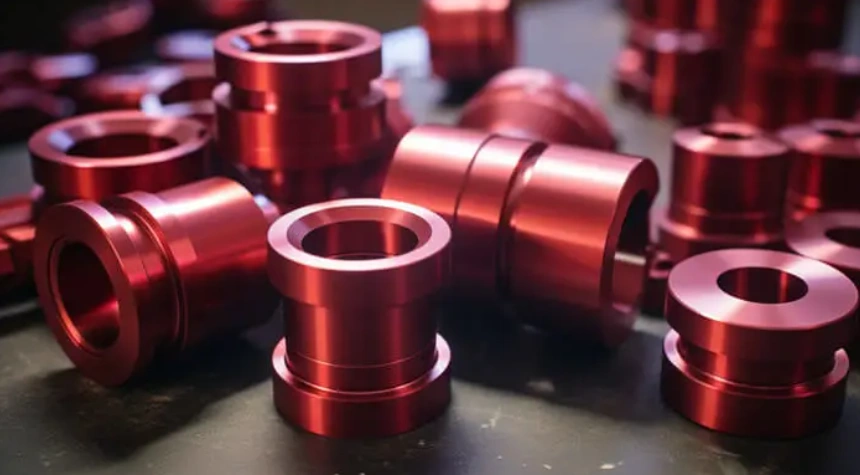
Small batch CNC turned parts
Enhanced Production
The precision CNC turning strategy can accommodate various production volumes, ranging from large-scale production to multiple runs for precision custom machining and low volume precision CNC machining. This type of flexibility is advantageous in meeting different client requirements.
Cost-effectiveness
The optimized turning parameters and cutting tools minimize waste. This lowers material and maintenance costs, ultimately making the part manufacturing process more cost-effective.
Further reading:
Try Prolean Now!
Limitations Of Precision CNC Turning
Despite the above advantages, precision CNC turning has its limitations, particularly regarding the setup process and cost. An experienced manufacturer is aware of these limitations and takes stock of them when choosing between CNC turning and alternatives.
Longer Setup Process
The setup process tends to be longer due to the requirement for precise calibration and tool alignment. The requirement for specialized fixtures and longer programming time is also an issue.
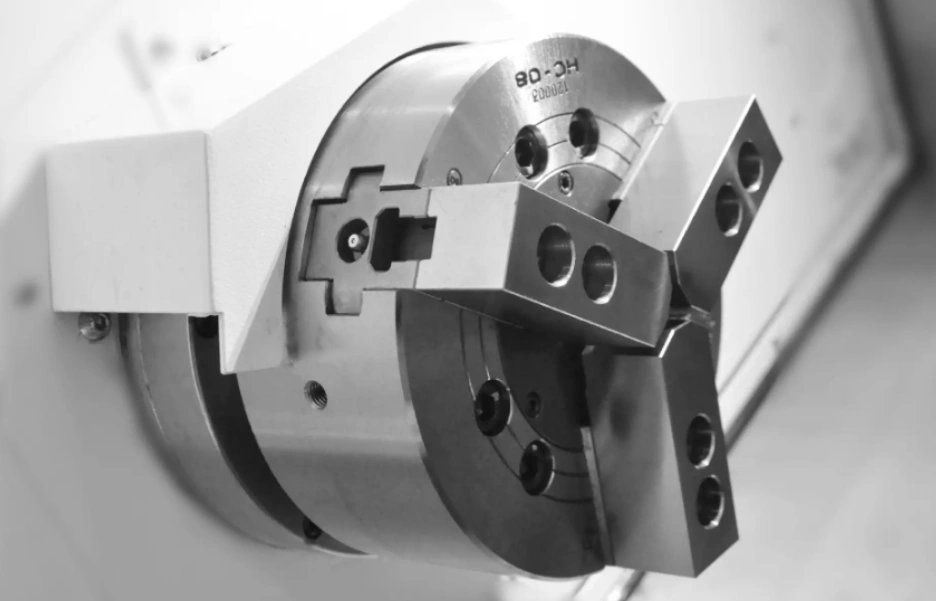
Turning fixture
Relatively More Costly
Cost of parts can be higher due to premium materials, extra quality inspection, and longer cycle times. These limitations can also help decide the manufacturing method to complement precision CNC turning for the best results.
In Conclusion
An in-depth understanding of CNC precision engineering, its capabilities, and applications provides a major edge in your business. With this background, it is easier to assess any CNC precision machining company, verify specifications, and ensure CNC precision machining parts meet specific industrial requirements.
ProleanTech is your one-stop shop for expert precision CNC turning services. Contact us today to get a quote!

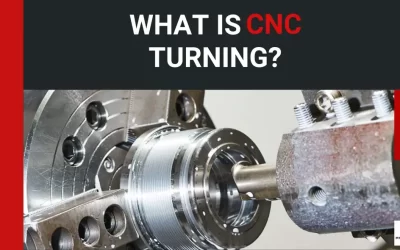
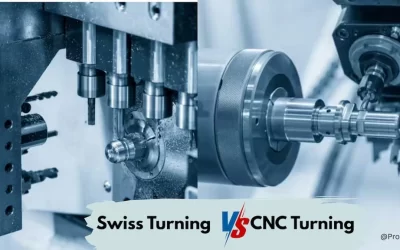

0 Comments